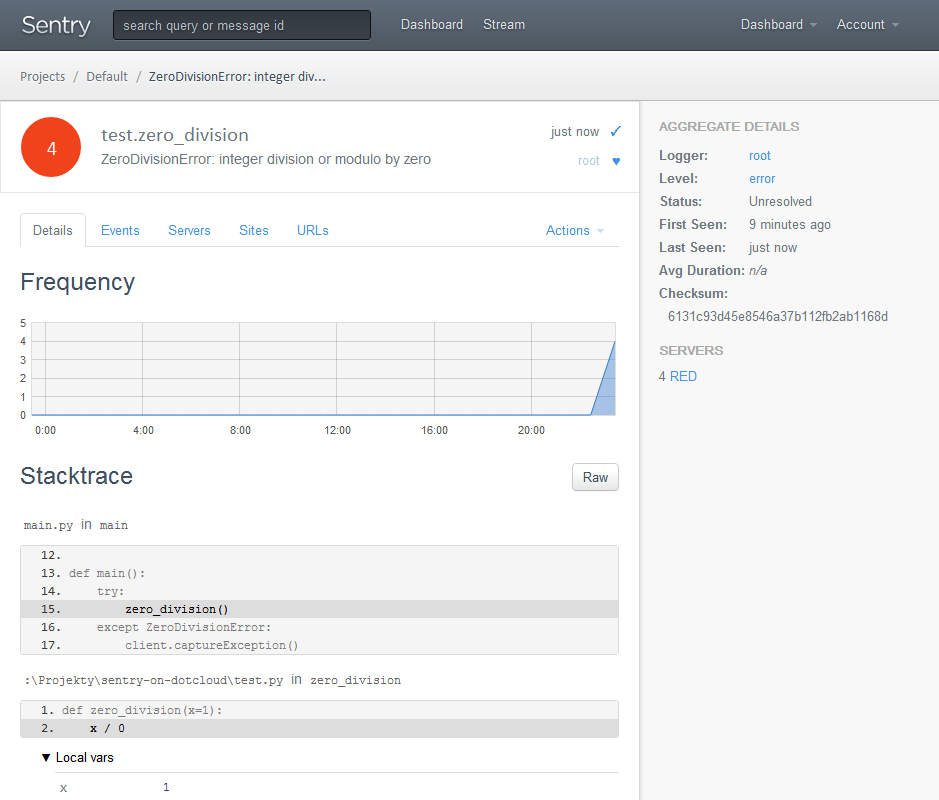Sentry on DotCloud
Sentry is a realtime event logging and aggregation platform written in Python. It collects error logs including stack traces and local vars from applications and sends out email notifications. It also has client libraries for Django, JavaScript, Java and a couple more.

DotCloud is a managed application hosting that provides a wide range of services (web servers, databases, caching, etc.) and makes it trivial to deploy applications.
This small project helps you to run Sentry and fits in a DotCloud's Free Plan making it an affordable platform for tracking errors in your applications.
Prerequisites
First you need to sign up for DotCloud account and install their command-line client. Windows users may be interested in DotCloudWin which does not require Cygwin installation.
Getting the Code
Clone the project repository and cd into the new directory:
git clone git://github.com/nigma/sentry-on-dotcloud.git
cd sentry-on-dotcloud
Configuration
Before you deploy the code it is recommended to make a couple adjustments in the configuration files.
Set random SECRET_KEY value in the sentry_conf.py file. You can use the
included generate_secret.py script or the following Python snippet
to generate a random key:
import random
chars = "abcdefghijklmnopqrstuvwxyz0123456789!@#$%^&*(-_=+)"
print "".join([random.choice(chars) for i in range(50)])
Deployment
Use the DotCloud CLI client to create a new project called sentry
and to push the application and configuration files:
dotcloud create sentry
dotcloud push sentry .
The url of the new application instance can be found using:
dotcloud url sentry
After you log in with the default credentials (admin/password)
it is strongly recommended to change your admin user password and email.
Other Resources
- Sentry documentation - http://sentry.readthedocs.org/en/latest/
- Similar project by Ken Cochrane. The main difference is that this one uses a recent version 4 of Sentry, enables background task processing using Celery and has a simpler structure.
- GitHub repository - https://github.com/nigma/sentry-on-dotcloud
- Related blog post - http://en.ig.ma/notebook/2012/sentry-on-dotcloud